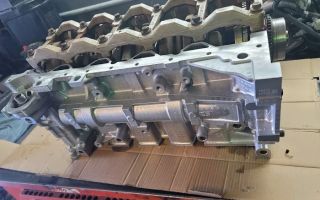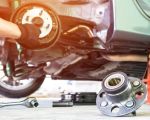Tips for Safe Driving in Extremely Humid Weather
- 1. Understanding Humidity's Impact on Driving
- 2. Essential Driving Precautions in Humid Weather
- 3. Vehicle Maintenance Tips for Humid Conditions
- 4. Dealing with Humidity-Related Visibility Issues
- 5. Safety Gear and Tools to Keep in Your Vehicle
1. Understanding Humidity's Impact on Driving
Humidity can have a significant impact on your driving experience, especially during extreme weather conditions. Extremely humid weather can affect visibility, tire pressure, and even the performance of your vehicle's engine. In regions where the humidity is consistently high, drivers may face additional challenges like condensation on the windows and increased likelihood of engine overheating. Understanding these effects can help you prepare better and drive more safely.

AJ's Auto Glass & Detailing
4404 S 84th St, Omaha, NE 68127, USA
2. Essential Driving Precautions in Humid Weather
When driving in extremely humid weather, it is crucial to adopt certain precautions to ensure your safety on the road. First, it’s important to maintain a safe distance from other vehicles, as sudden stops are more likely when the road is slippery or visibility is impaired due to fog or condensation on windows.
Always keep your headlights on, even during the day, to enhance your visibility and make your vehicle more noticeable to other drivers. Additionally, ensure your wipers are in good condition and top up the windshield washer fluid to keep your visibility clear throughout your drive.

AJ's Auto Glass & Detailing
4404 S 84th St, Omaha, NE 68127, USA
3. Vehicle Maintenance Tips for Humid Conditions
Keeping your vehicle in good condition is essential for handling the challenges of driving in humid weather. Regularly check your tire pressure, as the heat can cause tires to lose air, making them more prone to punctures and blowouts. Ensure that your air conditioning system is working well to keep the interior of your car cool and prevent windows from fogging up.
Regularly inspect your vehicle’s cooling system, as extreme humidity can increase the chances of engine overheating. Ensuring that your coolant levels are adequate can prevent overheating and breakdowns, especially in heavy traffic.
4. Dealing with Humidity-Related Visibility Issues
High humidity can cause fog or condensation to form on your windshield, impairing your visibility. To combat this, always keep your defroster on, and if necessary, adjust the air conditioning settings to reduce moisture buildup inside the vehicle.
In cases where condensation is heavy, stop at a safe location and wipe the windows down with a cloth or use a dehumidifier tool. If you are driving in conditions with reduced visibility due to humidity, reduce your speed and avoid making abrupt lane changes.
5. Safety Gear and Tools to Keep in Your Vehicle
When driving in extremely humid conditions, it’s wise to have some safety gear and tools in your vehicle. Consider keeping the following items on hand:
- Portable dehumidifier or moisture-absorbing bags to reduce internal humidity.
- Extra windshield washer fluid and a cleaning cloth to wipe away condensation.
- Jumper cables in case your vehicle’s battery drains due to excessive humidity.
- A basic toolkit for addressing minor vehicle issues on the go.
For those who need more comprehensive roadside assistance, we recommend visiting our store, Rescue & Towing, where we offer the best tools and services to keep you prepared in all weather conditions.



























